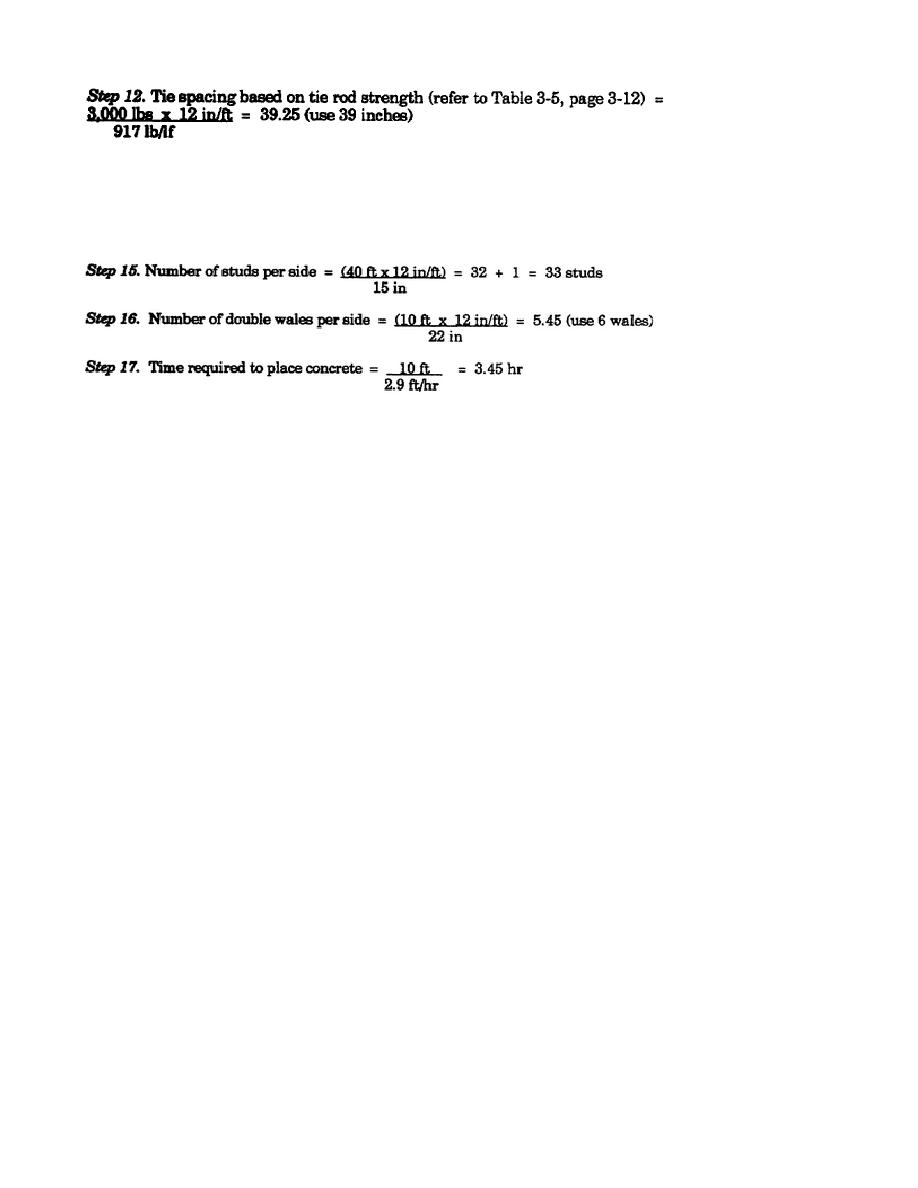
Step 13. Therefore, maximum tie spacing = 27 inches.
Step 14. Because we are using tie rods, it is not necessary to adjust the tie or stud spacing. The first tie rod goes
in one-half the spacing from the end and full spacing thereafter.
BRACING FOR WALL FORMS
General
Braces are used against wall forms to keep the forms in place and in alignment from mishaps due to external
forces (winds, personnel, equipment, vibration, and accidents). An equivalent force due to all of these forces (the
resultant force) is assumed to be acting uniformly along the top edge of the form in a horizontal plane. For most
military applications, this force is assumed to be 12.5 feet by the wall height. As this force can act in both
directions, braces to be used should be equally strong on tension as in compression, or braces should be used on
both sides of the wall forms. The design procedure is based on using a single row of braces, and assuming that
strong, straight, seasoned lumber will be used. The braces are properly secured against the wall forms and the
ground at both ends. Knowing the height of the wall to be built and selecting a material (2 inches or greater) for
the braces, determine the maximum safe spacing of these braces (center to center) that will keep the form work
aligned.
Nomenclature
See Figure 3-4 on page 3-16.
3-15
EN5466



 Previous Page
Previous Page
